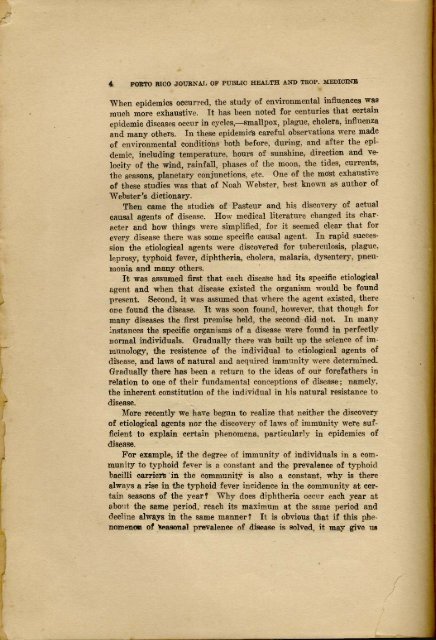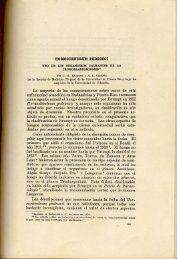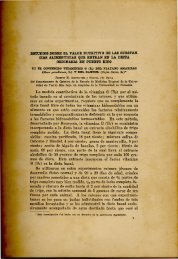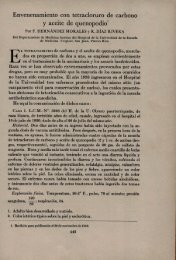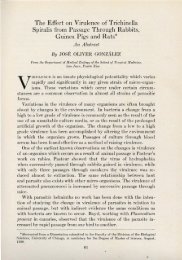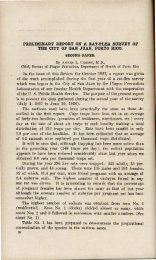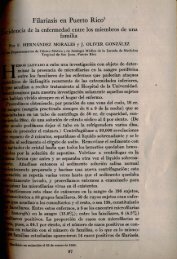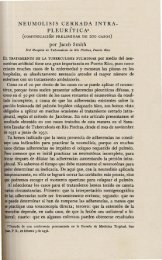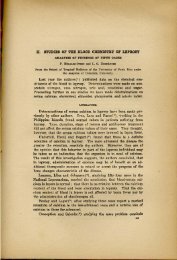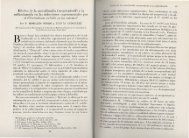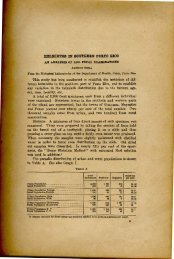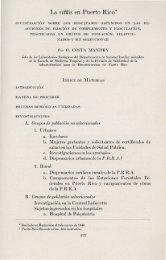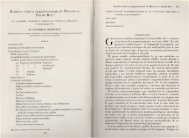Respiratory Disease.pdf
Respiratory Disease.pdf
Respiratory Disease.pdf
You also want an ePaper? Increase the reach of your titles
YUMPU automatically turns print PDFs into web optimized ePapers that Google loves.
4. PORT O RICO JOt ,."RN AL O ~' PUBLIC H EALT H AND TROP. ~rEDICINl!lWhen epidemics occurred, the study of environmental influences wasmuch more exhaustive. It has been noted for centuries that certainepidemic diseases occur in cyeles.c-smallpox, plague, cholera, influenzaand many others. In these epidemics careful observations were madeof environmental conditions both before, du ri ng, and after the epidemic,including temperature. hours of sunshine, direction and velocityof the wind, r ainfall, phases of the moon, the tides, currents,tbe seasons, planetary conjunctions, ctc. One of the most exhaustiveof th ese stu dies was that of NOaJl Webster, best kn own as author of"\Yebster 's dictionary.Then came th e studies of Pasteur and his discovery of actualcausal agents of disease. Ho w medical literature changed its characterand how th ings were simplified , for it seemed clear that forevery disease there was some specific causal agent. In ra pid successionth e etiological agent" were discovered for tuberculosis, plague,leprosy, typhoid fever, diphtheria, cholera , malaria, dysentery, pneumoniaand many oth ers.It was assumed first that each disease had its specific etiologicalagent. and when that disease existed the organism would be foundpresent. Second, it was assumed that where the agent existed, thereone found the disea e. It was soon found, however, tha t though formanv diseases the first premise held, the second did not. In manyinstances th e specific organ isms of a disease were found in perfectlynormal indiv id uals. Gradually there was built up the science of immunology,the resisten ee of the individual to etiological agents ofdisease, and laws of na tural and acquired immunity were determined.Gradually there has been a return 10 the ideas of our forefathers inrelation to one of their fundamental conceptions of disease; namely,the inherent constitution of the individual in his natural resista nce todisease.More recently we }J8Ve begun to realize that neither the discoveryof etiological agents nor the diseoverv of laws of immunity were sufficientto explain cert ain phenomena. par-ticularly in epidemics ofdisease.For example, if the degree of immunity of individuals in a community to typhoid fever is a con tant and the prevalence of typhoidbacilli carriers 'in the community is also a constant , why is therealwavs a rise in the typhoid fever incidence in the communitv at certainseasons of th e yea r' Why does diphtheria occur each' year atOb011t th e same period. reach its maximum at the same period anddecline always in the same manned It is obvious that if th is phenomenoeof '!Ipasonsl prevalence of disease if; solved, it may give lUI


